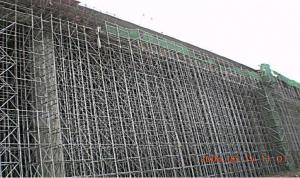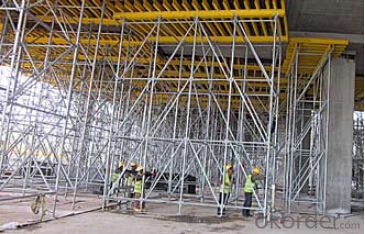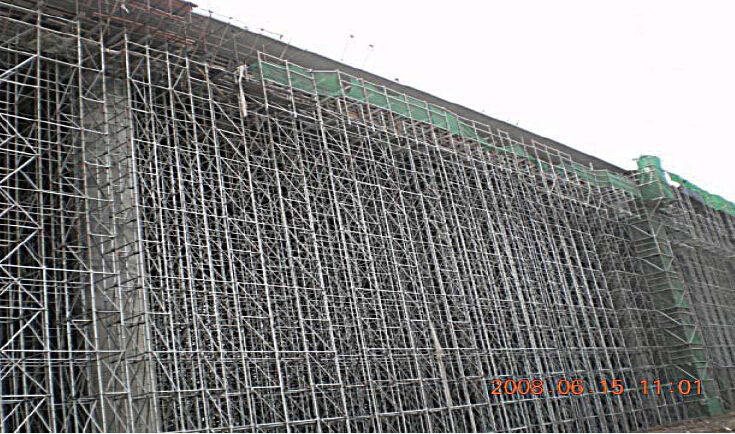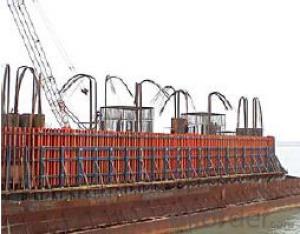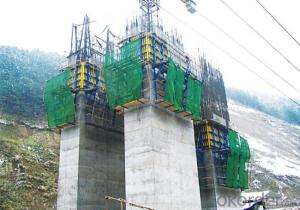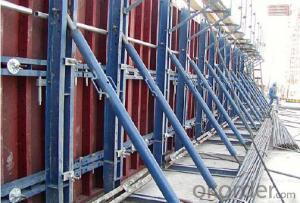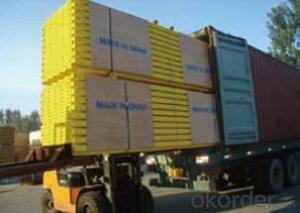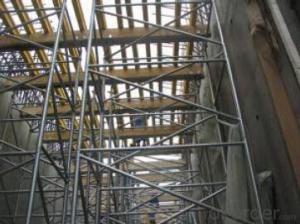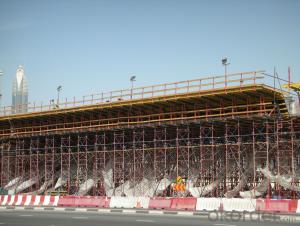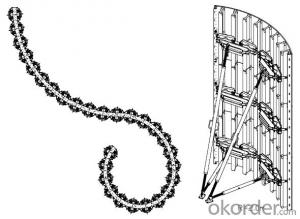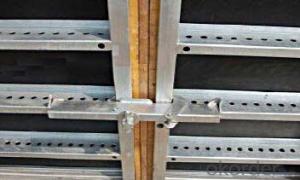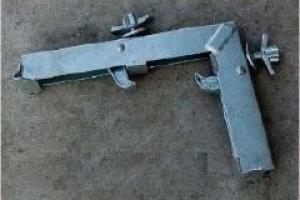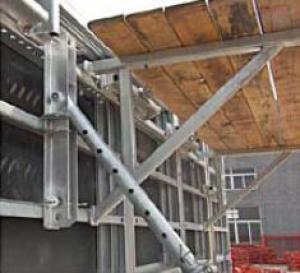Tower scaffolding for formwork and scaffolding systems
- Loading Port:
- Tianjin
- Payment Terms:
- TT OR LC
- Min Order Qty:
- 50 m²
- Supply Capability:
- 1000 m²/month
OKorder Service Pledge
Quality Product, Order Online Tracking, Timely Delivery
OKorder Financial Service
Credit Rating, Credit Services, Credit Purchasing
You Might Also Like
Tower Scaffolding
Shoring tower is an effective supporting system. It is easy to assemble and dismantlement, and
has excellent stability and bearing capacity. It has been widely used in the construction of industry
& residential buildings , bridges, tunnels and dam project, etc.
Characteristics:
◆ High degree of standardization.
◆ Easy storage and transportation
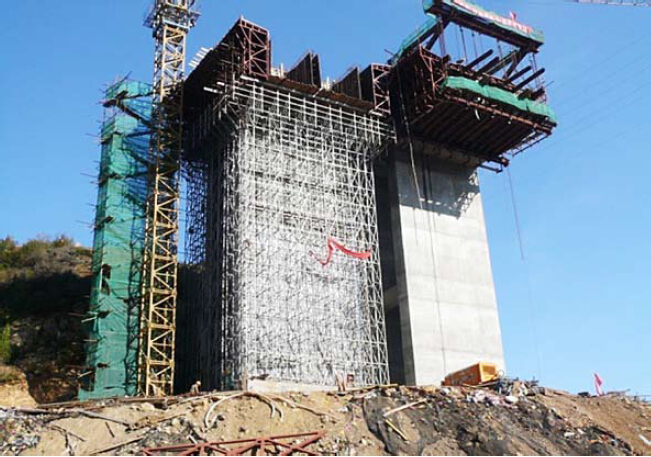
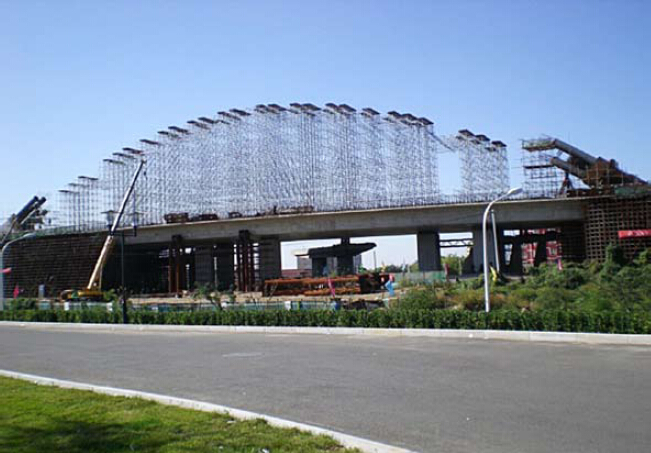
- Q: How does steel formwork affect the overall construction site logistics?
- The overall construction site logistics can be significantly impacted by steel formwork. Firstly, the durability and strength of steel formwork allow for multiple reuses, reducing the need for constant replacement and disposal of materials. This results in reduced waste generation and improved site cleanliness. Moreover, steel formwork is lightweight and easily adjustable, making it easier to handle and transport around the construction site. This improves material handling efficiency and reduces the time required for installation and removal of formwork. Additionally, the lightweight nature of steel formwork reduces the load on the structure, leading to reduced transportation costs and improved safety during construction. Furthermore, steel formwork offers high dimensional accuracy, ensuring precise and consistent shapes for concrete elements. This helps streamline the construction process by reducing the need for excessive adjustments and rework, resulting in improved time management and increased productivity. Additionally, steel formwork provides a smooth and even finish to concrete structures, eliminating the need for additional surface treatments and reducing the time and effort required for finishing work. In summary, steel formwork contributes to improved construction site logistics by reducing waste, enhancing material handling efficiency, improving construction speed, and ensuring high-quality finishes. Its durability, lightweight nature, and dimensional accuracy make it a valuable asset in optimizing construction processes and achieving project timelines more effectively.
- Q: How does steel formwork perform in fire-resistant structures?
- Steel formwork performs exceptionally well in fire-resistant structures. The inherent properties of steel, such as its high melting point and strength, make it an ideal material for withstanding high temperatures and structural integrity during a fire event. Firstly, steel formwork is non-combustible, meaning it does not contribute to the spread or intensity of the fire. It does not burn or release harmful gases when exposed to flames, unlike some other construction materials. This characteristic helps to prevent the rapid spread of fire within the structure, providing valuable time for evacuation and fire suppression. Moreover, steel has a high melting point compared to other materials commonly used in formwork, such as wood or plastic. This property allows steel formwork to maintain its structural integrity even when exposed to intense heat. It can withstand temperatures well above 1000°C (1832°F) without significant deformation or collapse, ensuring the stability of the structure and reducing the risk of sudden structural failure during a fire. Additionally, steel formwork has excellent load-bearing capabilities, even at high temperatures. This is crucial in fire-resistant structures as it allows the building to maintain its structural capacity when exposed to fire. The ability of steel formwork to bear the weight of the structure, even when compromised by fire, helps to prevent structural collapse and ensures the safety of occupants and emergency responders. Furthermore, steel formwork is durable and long-lasting, which is important in fire-resistant structures. It can withstand the effects of fire, such as thermal expansion and contraction, without significant damage. This durability ensures that the formwork can be reused or remain in place for future fire events, providing ongoing fire protection for the structure. In conclusion, steel formwork performs exceptionally well in fire-resistant structures. Its non-combustible nature, high melting point, load-bearing capabilities, and durability make it a reliable choice for maintaining the structural integrity and safety of the building during a fire.
- Q: What are the common cost-saving strategies when using steel formwork?
- Some common cost-saving strategies when using steel formwork include reusing the formwork for multiple projects, accurately measuring and cutting the formwork materials to minimize waste, properly maintaining and storing the formwork to prolong its lifespan, and utilizing innovative formwork systems that allow for faster installation and dismantling.
- Q: How does steel formwork handle formwork stripping?
- Steel formwork is highly durable and strong, allowing it to handle formwork stripping efficiently. The steel panels used in steel formwork systems are designed to be easily removed after the concrete has cured. This is typically achieved by using specialized tools such as formwork release agents, wedges, or hydraulic systems. Steel formwork's robust construction ensures it can withstand the pressure exerted during the stripping process, making it a reliable and effective choice for handling formwork stripping.
- Q: How much weight can steel formwork support?
- The weight that steel formwork can support depends on various factors such as the size and thickness of the steel, the design of the formwork, and the supporting structure. Generally, steel formwork is capable of supporting heavy loads ranging from a few hundred kilograms to several tonnes.
- Q: How does steel formwork handle different concrete slump flow measurements?
- Steel formwork offers versatility and durability when dealing with various measurements of concrete slump flow. Slump flow is a gauge of concrete's consistency and workability, indicating its capacity to flow and fill the formwork. Designed to be rigid and robust, steel formwork can withstand the weight and pressure of poured and cured concrete. This ensures that it effectively contains and supports concrete with different slump flow measurements, preventing any deformation or failure. One advantage of steel formwork lies in its ability to easily adapt to changes in concrete slump flow. It can be adjusted or modified to accommodate varying levels of fluidity and workability. By tightening or loosening the formwork panels, the desired shape and size can be achieved, ensuring proper containment and shaping of the concrete, regardless of its slump flow measurement. Furthermore, steel formwork provides a smooth and uniform surface for the concrete, which is crucial for achieving a high-quality finish. The steel's rigid structure guarantees that the formwork remains in place during the pouring process, minimizing the risk of any movement or displacement that could negatively affect the concrete's performance and appearance. Additionally, steel formwork is resistant to moisture and chemicals, which are often present in concrete mixtures. This resistance ensures that the formwork remains in excellent condition even when exposed to different slump flow measurements, preventing any degradation or corrosion that could compromise its strength and stability. Overall, steel formwork proves to be a dependable and efficient choice for handling different measurements of concrete slump flow. Its strength, adaptability, and resistance to moisture and chemicals make it well-suited for containing and shaping concrete with varying levels of workability, ensuring successful construction projects.
- Q: Can steel formwork be used for road construction?
- Yes, steel formwork can be used for road construction. It provides a sturdy and durable solution for shaping and supporting concrete during the road construction process. Steel formwork offers excellent strength, stability, and reusability, making it an ideal choice for constructing roads.
- Q: What is the difference between the steel template and the wood template? When to use steel formwork? When to use a wooden template?Now what kind of use
- Template in the development, of course, the difference is different material, steel template stiffness, small deformation
- Q: Can steel formwork be used in tunnel construction?
- Yes, steel formwork can be used in tunnel construction. Steel formwork is widely used in construction projects, including tunnel construction, due to its durability, strength, and versatility. It provides a rigid support structure that can withstand the pressure and stress exerted by the surrounding soil and rock in tunneling operations. Steel formwork is designed to be easily assembled and disassembled, allowing for efficient tunnel construction. It can be customized to fit the specific shape and dimensions of the tunnel, ensuring accurate and precise formwork. Additionally, steel formwork can be reused multiple times, making it a cost-effective solution for tunnel construction projects.
- Q: What are the advantages of using steel formwork?
- There are several advantages of using steel formwork in construction projects. Firstly, steel formwork is highly durable and has a longer lifespan compared to other materials such as timber or plywood. This means that it can be reused multiple times, reducing the overall cost of construction. Additionally, steel formwork is resistant to warping, shrinking, or expanding due to changes in humidity or temperature, ensuring consistent and accurate results in the construction process. Secondly, steel formwork offers excellent strength and stability, making it ideal for constructing large or complex structures. Its rigidity minimizes the risk of deformations and ensures the structural integrity of the concrete during the pouring and curing process, resulting in a high-quality finish. Furthermore, steel formwork provides a smooth and consistent surface finish to the concrete. This is particularly advantageous for architectural projects where an aesthetic appearance is essential. The steel surface prevents leakage, minimizing the need for additional waterproofing measures and reducing the risk of defects or cracks in the concrete. Moreover, steel formwork is highly adaptable and can be easily customized to fit different shapes and sizes. This flexibility allows for the construction of unique and complex designs, providing architects and engineers with more freedom in their creative process. Lastly, steel formwork is time-efficient. Its modular nature and ease of assembly and dismantling enable faster construction cycles, reducing overall project timelines. The quick turnaround time translates into cost savings and increased productivity on the construction site. In conclusion, the advantages of using steel formwork include durability, strength, smooth surface finish, adaptability, and time-efficiency. These benefits make steel formwork a preferred choice in construction projects, improving construction quality, reducing costs, and enhancing overall efficiency.
Send your message to us
Tower scaffolding for formwork and scaffolding systems
- Loading Port:
- Tianjin
- Payment Terms:
- TT OR LC
- Min Order Qty:
- 50 m²
- Supply Capability:
- 1000 m²/month
OKorder Service Pledge
Quality Product, Order Online Tracking, Timely Delivery
OKorder Financial Service
Credit Rating, Credit Services, Credit Purchasing
Similar products
Hot products
Hot Searches
Related keywords

